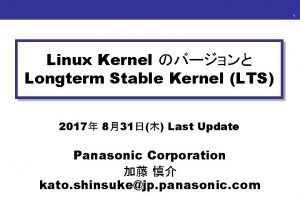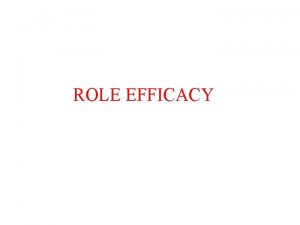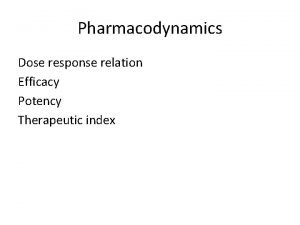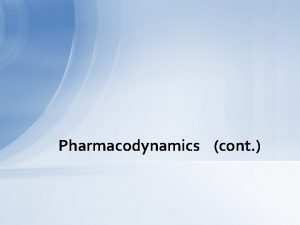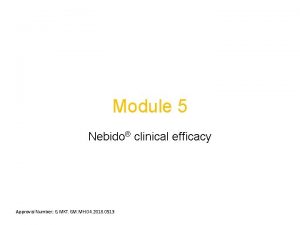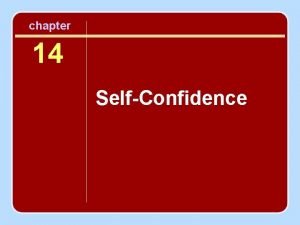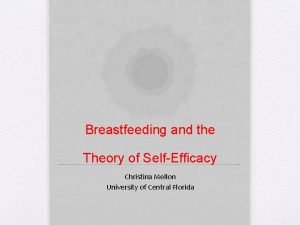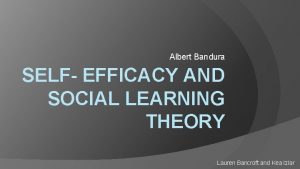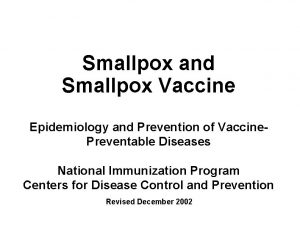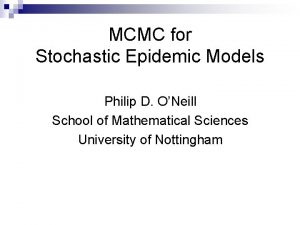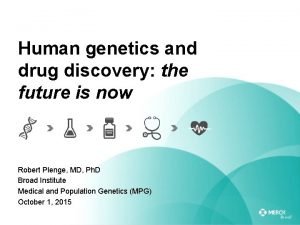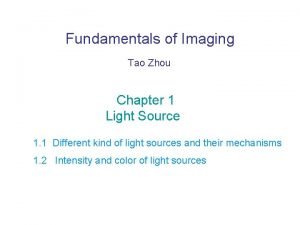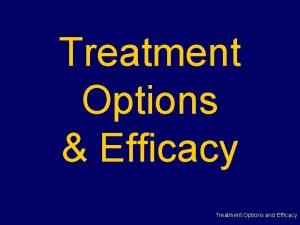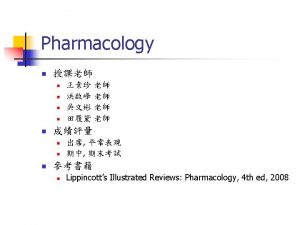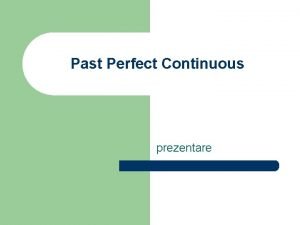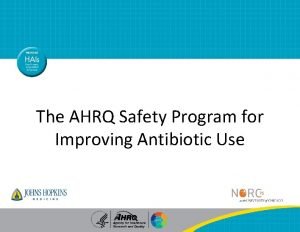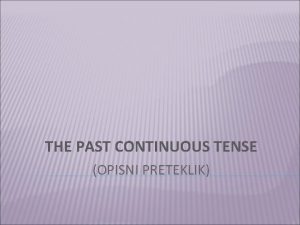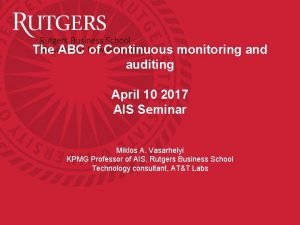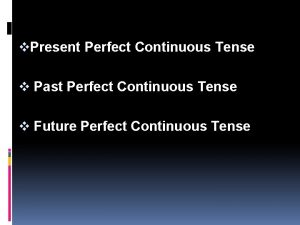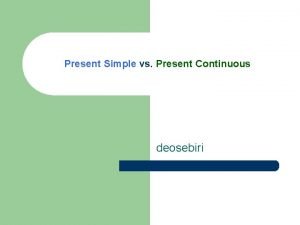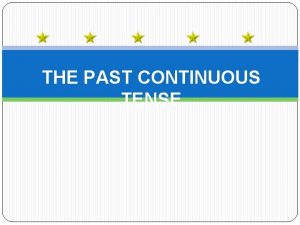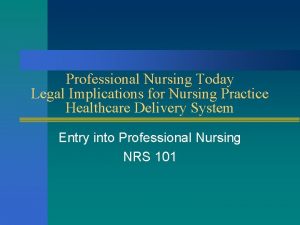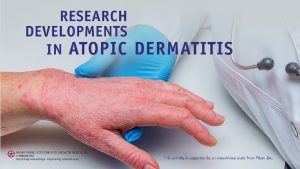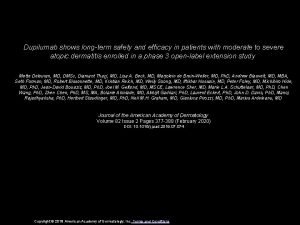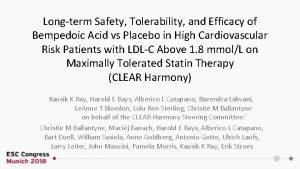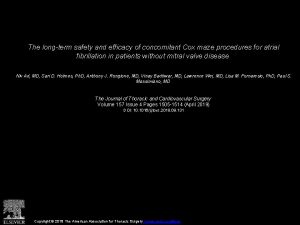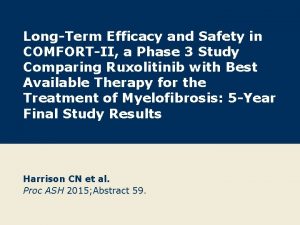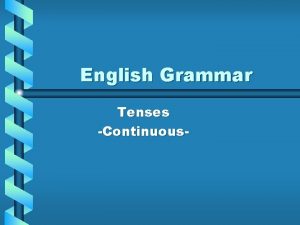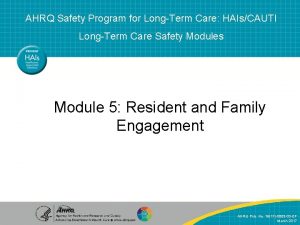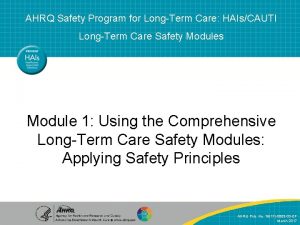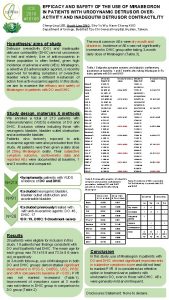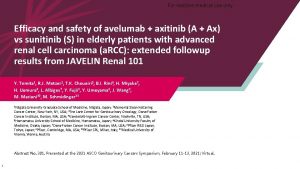Efficacy and safety trends with continuous longterm use






















































- Slides: 54


Efficacy and safety trends with continuous long-term use of crisaborole ointment, 2%, in patients with mild-tomoderate atopic dermatitis Lebwohl M, et al.

Study Design and Methods • Objective: Assess the long-term efficacy and safety of crisaborole in patients age ≥ 2 years with mild-moderate AD • Patients • Age ≥ 2 y who had completed either of two randomized, double-blind, vehicle-controlled, phase 3, 28 -day trials without safety concerns • Current study: 48 -week, open-label, phase 3 extension • Patients evaluated every 28 d using ISGA score • If ISGA ≥ 2, treatment was continued • If ISGA 0 -1, treatment was stopped • Treatment restarted if ISGA ≥ 2 at 28 -day evaluation • Patients were divided into 4 cohorts based on the number of initial consecutive on-treatment cycles (1, 2, 3, or 4) • For example, cohort 3 received 3 continuous months of crisaborole and had ISGA 0 -1 at the end of those 3 months ISGA, Investigator’s Static Global Assessment

Results Summary • 517 Patients entered the extension study • Age ranged from 11 to 14 years among the 4 cohorts • BSA of involved skin ranged from 16% to 20% • % Patients who achieved ISGA 0/1 declined across the cohorts • 78% of patients in cohort 1 achieved ISGA 0/1 at the end of the first treatment cycle compared to about 15% in cohort 2 and 5% in cohorts 3 and 4 • 15% of patients in cohort 2 achieved ISGA 0/1 at the end of the first treatment cycle, increasing to 76% at the end of the second treatment cycle • <5% of patients in cohort 3 achieved ISGA 0/1 at the end of the second treatment cycle, increasing to 59% at the end of the third treatment cycle • 5% of patients in cohort 4 achieved ISGA 0/1 at the end of the third treatment cycle, increasing to 43% at the end of the fourth treatment cycle

Results Summary (continued) • In patients who had crisaborole restarted, the percent who achieved ISGA 0 or 1 at the end of the first re-treatment cycle declined across the cohorts. • 53% of patients in cohort 1 achieved ISGA 0/1 at the end of the first retreatment cycle compared with 23% in cohort 4 • A treatment-related AE occurred in 1% to 5% across the 4 cohorts • Atopic dermatitis was the most frequent treatment-related AE reported, occurring in 1% to 4%

Faculty Commentary • Despite the complex study design, the study provides information on efficacy and safety of longer durations of exposure to topical crisaborole compared to shorter exposures • Patients who don’t get a clear or almost clear response in the short run may clear up if the treatment is continued, though there are some diminishing returns • Crisaborole appears safe independent of the number of months of treatment, up to 4

Implications for Clinical Practice • These results provide a reason to ask patients to stay on topical crisaborole treatment longer in order to see the full benefit, while reassuring patients that crisaborole is safe • Good alternative to a topical corticosteroid • Otherwise, the impact on treatment may be limited since patients generally want treatment that works quickly • For this reason, clinicians may treat patients with the combination of a topical corticosteroid and topical crisaborole initially to achieve faster results

Safety, efficacy, and pharmacokinetics of crisaborole ointment, 2%, in infants aged 3 to <24 months with mild-to-moderate atopic dermatitis Schlessinger J, et al

Study Design and Methods • Objective: To evaluate the safety, efficacy, and pharmacokinetic profile of crisaborole in infants age 3 to <24 months • Multicenter, open-label, single-arm, phase 4 trial of crisaborole applied twice daily for 28 days • Patients: • • Age 3 months to < 24 months Atopic dermatitis based on Hanifin and Rajka criteria Mild or moderate atopic dermatitis according to ISGA Atopic dermatitis involving ≥ 5% BSA, excluding the scalp BSA, body surface area; ISGA, Investigator’s Static Global Assessment

Study Design and Methods (continued) • Patients (pharmacokinetic cohort): • • Age 3 to <9 months Moderate atopic dermatitis according to the ISGA Atopic dermatitis involving ≥ 35% BSA, excluding the scalp No lesions below the wrists and ankles or within 2 cm of the mouth

Results Summary • 137 patients entered the study • • • Mean age 13 months 64% male, 61% White 38% had mild disease and 61% moderate disease according to ISGA criteria Mean BSA 28% Mean EASI score 11. 8 Mean POEM total score 14. 8 Mean time since onset of atopic dermatitis 10 months 16% had a history of another atopic condition 50% previously treated with a topical corticosteroid • In the PK cohort, mean BSA 54% EASI, Eczema Severity and Area Index; POEM, Patient-Oriented Eczema Measure

Results Summary: Safety • Only 4 (3%) patients discontinued treatment because of a treatmentemergent AE, but remained in the study • 2 experienced a treatment-related AE • 1 was classified as application site pain • 1 as application site discomfort • 84 AEs were reported; 9 were judged to be treatment-related • Of the 9 treatment-related AEs • Application site pain occurred in 5 (3. 6%) • Eczema occurred in 2 (1. 5%)

Results Summary: Efficacy • On day 8, 41% achieved clear or almost clear skin • 20% achieved clear or almost clear skin and at least 2 -grade improvement in the ISGA from baseline • On day 29, 47% achieved clear or almost clear skin • 30% achieved clear or almost clear skin and at least 2 -grade improvement in the ISGA from baseline • On day 29, the following were observed: • BSA: 15. 2% reduction • EASI score: 57. 5% reduction • POEM total score: 8. 5% reduction

Results Summary: Pharmacokinetics • Key pharmacokinetic parameters were measured, which showed systemic exposure similar to patients age ≥ 2 years

Faculty Commentary • This is mainly a safety study, although the study also showed efficacy • There was no signal of any unusual increased risk in these young patients with extensive disease • The study results led to a change in the approval of crisaborole to include use in children age 3 months to 2 years

Implications for Clinical Practice • The approval of topical crisaborole for children age 3 months to <24 months gives us a good option for AD in this age group • Moreover, we can tell all our patients, regardless of their age, that topical crisaborole is so safe that it can be used even in young infants • This study will encourage greater use of topical crisaborole for AD in very young children where there is great concern about AEs related to topical steroids • Crisaborole will be used as an alternative to or as a means to reduce exposure to topical steroids • However, a big question remains: Will patients apply it?

Association between an itch-free state in atopic dermatitis treated with ruxolitinib cream and systemic inflammatory mediators Owens S, et al

Study Design and Methods • Subanalysis of a trial involving 307 patients randomized to: • Ruxolitinib administered once or twice daily at strengths ranging from 0. 1% to 1. 5% for 8 weeks • Triamcinolone 0. 1% cream twice daily for 4 weeks followed by vehicle for 4 weeks • Vehicle administered twice daily for 8 weeks • Patients with data and sera in the intent-to-treat population (N=89) • Patient-reported itch was assessed daily using a numeric rating scale (NRS) (0 -10) • Itch-free state was defined as an NRS score of 0 or 1 at week 8 • Fold change from baseline to week 8 of 1012 proteins evaluated for each patient and comparisons made between itch-free and non-itch-free participants using a 2 -sample t-test

Results Summary • The greatest % of patients achieving an itch-free outcome occurred with the highest topical ruxolitinib dose • 22 patients were itch-free at week 8, whereas 67 were not • 53 proteins were more down-regulated in itch-free patients compared with those who were not itch-free • Examples: ALDH 3 A 1, CES 2, TMPRSS 15, TYMP, LEP • 4 proteins were more up-regulated in itch-free patients • Neurotropin-4 was the only top protein listed to experience more upregulation in itch-free patients

Faculty Commentary • Topical ruxolitinib is effective for AD and is particularly effective at reducing itch • The number of itch-free patients treated with ruxolitinib exceeded that of the triamcinolone-treated group • However, triamcinolone was only used for 4 weeks • So patients in the triamcinolone arm were off the triamcinolone for 4 weeks at the 8 -week evaluation for being itch free

Implications for Clinical Practice • Topical ruxolitinib is not approved in the US • Some may look at the findings and think that we should target being completely clear of itch as an outcome • The findings are supportive of using a topical—or perhaps systemic— JAK inhibitor for patients who are suffering with itch due to AD

Dupilumab treatment for up to 3 years demonstrates sustained efficacy in adult patients with moderate-to-severe atopic dermatitis: Results from LIBERTY AD Adult OLE Blauvelt A, et al

Study Design and Methods • Objective: To assess the long-term safety and efficacy of dupilumab in adults with moderate-to-severe atopic dermatitis • Ongoing, phase 3, multicenter study • Patients • Adults age ≥ 18 y • Previously participated in any dupilumab study or had been screened for a phase 3 study, but were not randomized because of randomization closure • Treated with dupilumab 300 mg every week for up to 148 weeks

Results Summary • Patients: • 2678 were enrolled and all but 1 were treated • Mean age 39. 2 years; 60% male; 72% White • Patients exhibited considerable disease burden at baseline: • At entry into the parent study, about half had moderate disease and half had severe disease • Half of the patients (49. 5%) withdrew from the study; most because the study was terminated by the sponsor upon FDA approval of dupilumab • Treatment discontinuation: • • 4. 1% due to an adverse event 2. 1% due to lack of efficacy 8% at the subject’s request 2% were lost to follow-up

Results Summary: Efficacy • At week 148: • 74% had IGA 1 (clear/almost clear) • 95% had IGA 2 (mild); not surprisingly, the people who stay in a study that long are people doing well on drug. • Mean percent change from week 0 in EASI was -95%; 97% achieved EASI-75 • Similar improvements were observed in the Peak Pruritus numeric rating scale scores EASI, Eczema Severity and Area Index; IGA, Investigator’s Global Assessment

Results Summary: Safety • Treatment-emergent AE • Dupilumab: 85% • Placebo + TCS: 85% • Dupilumab + TCS: 84% • Serious treatment-related AE reported in approximately 1% of each of the 3 groups • The most common adverse events observed in the dupilumab only group were: • • Nasopharyngitis: 28% Conjunctivitis: 20% Atopic dermatitis: 16% Upper respiratory tract infection: 13%

Faculty Commentary • We know dupilumab is a great drug; we’ve seen it in our patients • This study documents the good response—both efficacy and safety— over a long period of treatment • Few patients dropped out for reasons that sounded like failure suggesting that patients were satisfied with their treatment

Implications for Clinical Practice • Dupilumab has basically no competition right now, so the findings of this study are unlikely to impact practice • The results might reassure patients worried about the risk of dupilumab • As new drugs enter the market for patients with extensive AD, dupilumab will have the advantage of more years of safety data • The conjunctivitis rate of 20% seems high; conjunctivitis isn’t a big issue in my practice

Patient-reported outcomes (PROs) with abrocitinib treatment in patients with moderate-to-severe atopic dermatitis: Results from a randomized, phase 3 clinical trial Silverberg J, et al

Study Design and Methods • Objective: To assess changes in patient-reported outcomes of symptoms • Randomized, double-blind, placebo-controlled trial • Patients • Age ≥ 12 years with moderate-to-severe atopic dermatitis • Had an inadequate response or intolerance to topical medication or required systemic therapy to control their atopic dermatitis • Randomized 2: 2: 1 to: • Abrocitinib 100 mg • Abrocitinib 200 mg • Placebo

Results Summary • Patients (N=387) • Mean age 33 y • Median disease duration 20 years • 60% with moderate atopic dermatitis as assessed by the Investigator’s Global Assessment (IGA) • Mean EASI 30. 5 • Mean POEM 19. 7 • Mean DLQI 14. 4 for adults • Children’s DLQI 12. 7 for adolescents DLQI, Dermatology Life Quality Index; EASI, Eczema Area and Severity Index; IGA, Investigator’s Global Assessment; POEM, Patient-Oriented Eczema Measure

Results Summary (continued) • At 12 weeks • IGA clear/almost clear with ≥ 2 -grade improvement: • 24% abrocitinib 100 mg • 44% abrocitinib 200 mg • 8% placebo • Reduction in the Peak Pruritus Numerical Rating Scale: • -2. 8 abrocitinib 100 mg • -4. 1 abrocitinib 200 mg • -1. 3 placebo • Reduction in the POEM score: • • -6. 8 abrocitinib 100 mg -10. 6 abrocitinib 200 mg -3. 7 placebo Differences in the POEM scores became evident by week 2

Results Summary (continued) • In terms of quality of life at 12 weeks: • Reduction in the DLQI score: • -7. 0 abrocitinib 100 mg • -9. 1 abrocitinib 200 mg • -4. 2 placebo • Reduction in the CLDQI: • -6. 4 abrocitinib 100 mg • -7. 5 abrocitinib 200 mg • -3. 9 placebo

Faculty Commentary • The results clearly show that use of the Janus kinase inhibitor abrocitinib resulted in dose-dependent improvement in itch • The POEM score improved by: • 2 MCIDs with abrocitinib 100 mg • 3 MCIDs with abrocitinib 200 mg • A 2 -fold improvement in the minimum clinically important difference (MCID) represents important improvement in the life of the patient

Implications for Clinical Practice • If approved, abrocitinib is likely to provide a very effective way of not only controlling and improving skin appearance, but itch and patient quality of life • Improving patient quality of life is a critically important goal of treatment • The results of this study are some of the most impressive regarding the impact of treatment on the quality of life of patients with atopic dermatitis

Peak Pruritus Numeric Rating Scale (PPNRS) response with abrocitinib in patients with moderate-to-severe atopic dermatitis: Results from a randomized, phase 3 clinical trial Simpson E, et al

Study Design and Methods • Objective: To assess response rates and time to response with abrocitinib in patients with moderate-to-severe atopic dermatitis • Randomized, double-blind, placebo-controlled trial • Patients: • Age ≥ 12 years • Moderate-to-severe atopic dermatitis ≥ 1 year • Randomized 2: 2: 1 to: • Abrocitinib 100 mg • Abrocitinib 200 mg • Placebo

Results Summary • Patients (N=387) • Mean age 33 years • Mean disease duration 20 years • At baseline: • 60% had moderate atopic dermatitis (IGA) • Mean EASI 30. 5 • Mean PP-NRS 7. 0 • 64% PP-NRS ≥ 7 EASI, Eczema Area and Severity Index; IGA, Investigator’s Global Assessment; PP-NRS, Peak Pruritus Numeric Rating Scale

Results Summary (continued) • Rapid onset of itch response with abrocitinib • On day 2, significantly more patients treated with abrocitinib 200 mg experienced ≥ 2 -point improvement in the PP-NRS compared with placebo • On day 3, significantly more patients treated with abrocitinib 100 mg experienced ≥ 2 -point improvement in the PP-NRS compared with placebo • Median time to response: • Abrocitinib 100 mg: 7 days • Abrocitinib 200 mg: 4 days • Placebo: 19 days

Results Summary (continued) • By week 2, significantly more patients in both abrocitinib groups experienced a 4 -point or greater improvement in the PP-NRS compared with placebo • At week 12, a 4 -point or greater improvement in the PP -NRS was observed in: • Abrocitinib 100 mg: 38% of patients treated with abrocitinib 100 mg • Abrocitinib 200 mg: 57% • Placebo: 15% • The percentage change in the PP-NRS was significantly greater in both abrocitinib groups within several days of treatment • At week 12, the percentage change in the PP-NRS in both abrocitinib groups was independent of the baseline PP-NRS

Results Summary: Safety • Treatment-emergent adverse event: • Abrocitinib 100 mg: 69% • Abrocitinib 200 mg: 78% • Placebo: 57% • Serious adverse event in 3% to 4% of patients in each group • There were no cases of venous thromboembolism, major cardiovascular events, or deaths • There were no clinically significant changes in hemoglobin, neutrophils, or lymphocytes • Dose-related numeric decrease in median platelet count occurred at 4 weeks in patients treated with abrocitinib; this improved toward baseline levels

Faculty Commentary • Itch reduction is an important treatment goal in patients with atopic dermatitis • FDA considers a 4 -point reduction in itch to be meaningful to patients with atopic dermatitis • This reduction was reported by patients within a few days of starting abrocitinib • Several medications are now available for the treatment of patients with atopic dermatitis • This study demonstrates that the effects of the Janus kinase inhibitor abrocitinib extend beyond reducing inflammation to also play a role in reducing the neuronal sensation of itch

Dupilumab treatment results in rapid improvement in itch in adult and adolescent patients with moderate-tosevere atopic dermatitis (LIBERTY AD SOLO 1 & 2, and ADOL trials) Yosipovitch G, et al

Study Design and Methods • Objective: To assess improvement in pruritus in patients treated with dupilumab • Post hoc analysis of 3 phase 3 trials: • Adults: SOLO 1, SOLO 2 • Adolescents: ADOL • Patients • Adolescents and adults with moderate-to-severe atopic dermatitis • Randomized to: • SOLO 1 and 2 • Dupilumab 300 mg weekly or every 2 weeks • Placebo • ADOL: • Dupilumab 300 mg every 4 weeks • Dupilumab 200 mg or 300 mg every 2 weeks based on body weight • Placebo • All patients received a loading dose on day 1

Results Summary At baseline, PP-NRS scores were 7. 3 to 7. 4 in adults and 7. 5 to 7. 7 in adolescents Dupilumab treatment vs placebo resulted in significant improvement in pruritus as early as day 2 in adults and day 6 in adolescents At day 15: The percent change in the PP-NRS score was: Dupilumab once weekly: -22. 5% Dupilumab every 2 weeks: -24. 7% Placebo: -3. 4% Dupilumab every 2 weeks: -25. 3% Dupilumab every 4 weeks: -21. 8% Placebo: -5. 7% The percent change in the PP-NRS score was: • Dupilumab was well tolerated PP-NRS, Peak Pruritus Numeric Rating Scale

Faculty Commentary • Patients in the 3 trials reported severe itch • The trials showed statistically significant reduction in itch with dupilumab by day 2 in adults and day 6 in adolescents • It isn’t clear from this study if the itch reduction achieved within a few days of initiating dupilumab is sufficient to be clinically meaningful to patients • It remains to be seen how the rate of itch reduction observed with dupilumab will compare with other medications under investigation

Implications for Clinical Practice • Dupilumab is the gold standard for patients with moderate-to-severe atopic dermatitis who require systemic therapy • The experience in adolescents is comparable to adults

Treatment patterns among patients with atopic dermatitis using advanced therapies in the United States: Analysis of a retrospective claims database Eichenfield L, et al

Study Design and Methods • Objective: To describe treatment patterns for patients with atopic dermatitis who are initiating advanced therapy Retrospective analysis of the IQVIA Health Plan Claims Dataset from September 2016 through July 2018 Patients: Age ≥ 12 years with atopic dermatitis Newly initiated on advanced therapy following the availability of dupilumab in March 2017 Advanced therapy consisted of dupilumab, oral corticosteroid, phototherapy, or systemic immunotherapy (ie, methotrexate, cyclosporine, azathioprine, or mycophenolate mofetil) Continuously enrolled for 6 months or more before and after the first advanced therapy claim

Results Summary • Patients (N=1980) • Mean age 41 years; 61% were female • Index therapy: • • Dupilumab: 13% Systemic immunosuppressant: 5% Phototherapy: 8% Oral corticosteroid: 73% • 65% had used a topical corticosteroid prior to the study

Results Summary (continued) Adherence was defined as the proportion of days covered ≥ 80% Adherence at 6 months: Dupilumab: 69% Oral corticosteroid: 1% Systemic immunosuppressant: 32% Persistence defined as time spent on therapy without a gap >60 days Persistence at 6 months was: Dupilumab: 78% Oral corticosteroids: 2% Systemic immunosuppressant: 36% Persistence at 12 months was: Dupilumab: 75% Oral corticosteroid: 2% Systemic immunosuppressant: 28%

Results Summary (continued) For patients treated with dupilumab, a systemic immunosuppressant, or phototherapy as their index therapy, an oral corticosteroid was the overwhelming choice for subsequent therapy For patients treated with an oral corticosteroid as their index therapy, most received dupilumab as their subsequent therapy

Faculty Commentary • Systemic corticosteroids are generally not appropriate for atopic dermatitis • An oral corticosteroid was the index therapy in three-quarters of patients • The higher rate of persistence with dupilumab suggests that: • Patients are more likely to receive treatment with dupilumab, which has stronger evidence to support its use, than other medications, eg, methotrexate, cyclosporine, azathioprine, and mycophenolate mofetil, which are supported with less evidence • Dupilumab is better tolerated than other systemic medications

Implications for Clinical Practice • The long-term use of systemic corticosteroids should be discouraged consistent with guidelines • The high persistence rate with dupilumab indicates that the safety and efficacy are acceptable to patients with atopic dermatitis in the real world
 Lts stable
Lts stable Years solitary confinement
Years solitary confinement Present progressive repetition with always
Present progressive repetition with always Past simple present simple future simple
Past simple present simple future simple Types of personality in organisational behaviour
Types of personality in organisational behaviour What is role efficacy
What is role efficacy Potency vs efficacy
Potency vs efficacy Potency vs efficacy
Potency vs efficacy Testosterone levels after injection graph
Testosterone levels after injection graph Optimal self confidence
Optimal self confidence Conclusion of breastfeeding
Conclusion of breastfeeding Collective teacher efficacy
Collective teacher efficacy Collective teacher efficacy
Collective teacher efficacy Collective teacher efficacy
Collective teacher efficacy Albert bandura self-efficacy
Albert bandura self-efficacy Vaccine efficacy
Vaccine efficacy Vaccine efficacy
Vaccine efficacy Drug efficacy
Drug efficacy Luminous efficacy comparison chart
Luminous efficacy comparison chart Drug efficacy
Drug efficacy Slidetodoc.com
Slidetodoc.com Efficacy potency
Efficacy potency Use of momentum and impulse as safety equipment in vehicles
Use of momentum and impulse as safety equipment in vehicles Present continuous past tense
Present continuous past tense Present continuous past tense
Present continuous past tense Expresiones del pasado continuo
Expresiones del pasado continuo Future perfect or future continuous exercises
Future perfect or future continuous exercises Past continuous exemple
Past continuous exemple Where do you activate the four shades function
Where do you activate the four shades function Safety care training
Safety care training Personal safety vs process safety
Personal safety vs process safety Ind safety report
Ind safety report Basic safety orientation
Basic safety orientation 00101-15 basic safety
00101-15 basic safety Yesterday
Yesterday Trends in media and information
Trends in media and information Ahrq safety program for improving antibiotic use
Ahrq safety program for improving antibiotic use Past continuous tense
Past continuous tense Past simple past continuous past perfect
Past simple past continuous past perfect Jitsmi
Jitsmi Continuous control monitoring tools
Continuous control monitoring tools Present perfect and past continuous
Present perfect and past continuous Esercizi future continuous e future perfect
Esercizi future continuous e future perfect Present perfect continuous auxiliary verb
Present perfect continuous auxiliary verb Present continuous vs future simple exercises
Present continuous vs future simple exercises Timbering in loose soil
Timbering in loose soil Present continuous for future use
Present continuous for future use Write sentences with the present continuous
Write sentences with the present continuous Use the verbs in the present simple or present continuous
Use the verbs in the present simple or present continuous Present progressive for plans
Present progressive for plans Time markers past perfect continuous
Time markers past perfect continuous Were verb forms
Were verb forms Present continous exercises
Present continous exercises Future perfect continuous tense example
Future perfect continuous tense example Trends and issues in nursing
Trends and issues in nursing
